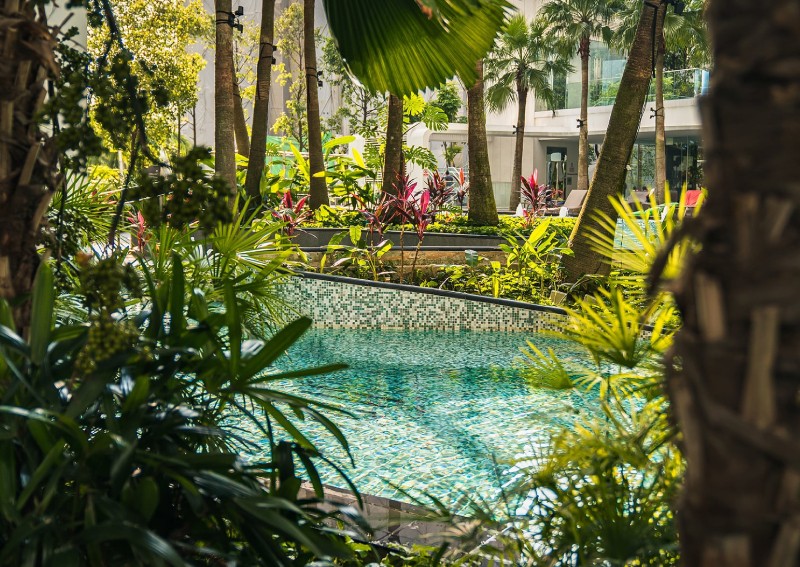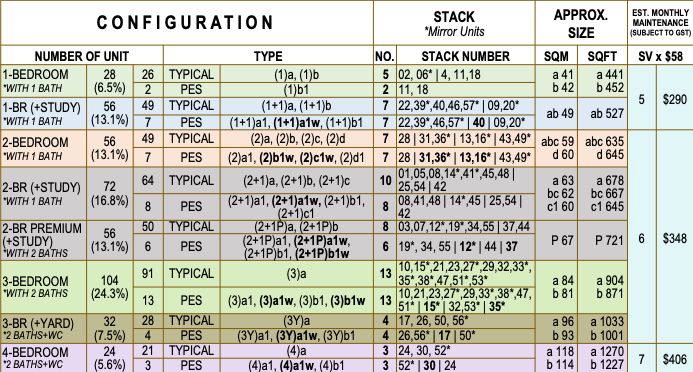7 key questions to ask about condo facilities

From the moment you step into a showflat, you’ll be bombarded with impressive facts about the condo facilities on offer. It’s something that every developer likes to use to promote the uniqueness of their project.
Whether there are more pools than any other development in the neighbourhood, or the playground being designed by an award-winning architect, or perhaps even the clubhouse is a preserved historical building, etc.
The truth is while you might see a list of “46 condo facilities”, most of the time it is a lot of marketing speak. For example, a yoga deck is very often just – a wooden deck. You can say the same for a wellness pond – it really is just a run of the mill water feature.
While I wouldn’t like to say that there is a “bad” facility, there is the possibility that the facility isn’t a good fit for your lifestyle; and you do need to compare between facilities, if you’re looking at more than one development.
As such, here are some questions to ask about the condo facilities, so you can make better comparisons:
This doesn’t refer to any specific facility, but the overall maintenance costs you can expect to pay. For most mass market condos, this is about $200 to $450 per month (collected on a quarterly basis). Of course, this is dependent on the share value of your unit (which is dependent on the size).

The range and nature of facilities plays a big role in this. For example, condos that have a concierge service – typical of luxury properties – can result in four-digit maintenance fees every month .
When working out the affordability of a unit, remember to add the cost of maintenance to your other obligations, like the home loan repayment (and before you ask, no, you can’t use your CPF to pay maintenance bills).
As an aside, note that bigger developments have an advantage here. They tend to have more condo facilities, but also cost less in terms of maintenance. In a mega project like Parc Clematis , for instance, there are over 1,400 units to split the costs, thus reducing the overall bill for each owner.
This can be a major point of contention with the condo management.
How do you feel about a condo that won’t let your domestic helpers use the pool or the gym? This is a longstanding practice in many, but not all, condos. If this concept doesn’t agree with you, you might want to look for another option.
[embed]https://www.facebook.com/EELITPA/photos/a.409261659148381/1173266166081256/[/embed]
You should also consider the rules regarding personal trainers, swim coaches, or any other third party that you’d like to invite into the condo.
Some developments have rules that are much tighter; to the point where you’ll need to sign in your trainer / swim coach each time they arrive. Others will just let them walk-in, and occasionally make random checks.
Finally, do take note of the usage of clubhouse facilities and BBQ pits. There are limits on the number of guests you can have (e.g. you may not be able to bring in 20 people and give them all pool access during your BBQ).
Decide if all of the rules agree with you.
For resale properties, observe the level of usage for the facilities; ideally at peak periods such as weekends.
There’s a tricky balance involved here. For example, small developments have fewer residents. But the facilities also tend to be smaller, so it’s still possible for the gym to be occupied all the time, or the BBQ pits to be overly crowded or hard to book.

The only developments that are mostly safe from this are mega-projects, which have massive land plots for facilities, or condos that use an 80/20 allocation (i.e. 80 per cent of the plot space is given over for shared facilities).
Whether or not you’re going to use the facility, you’re paying for it. So you need to decide if the bowling alley, rock-climbing wall, or concierge service is really something that matters to your family.
We doubt that your 75-year old in-law living with you, for instance, will find much use for the novelty rock-climbing wall.
We know of some condo residents who have used their pool or gym once in every 10 years. Sometimes, a smaller development with fewer facilities can save you thousands of dollars every quarter; with almost no impact on your lifestyle.
In bigger condo developments, your favourite facility might be quite a walk from your unit. It might be better to opt for facilities that are right out the door; such as having BBQ pits next door instead of three condo blocks away (it makes it easier to host parties).

This also applies on a vertical basis. For example, if you love sky gardens, you may want to check out which floors are the closest. This can help you decide which units to pick, to maximise the convenience of getting there.
The playground, BBQ pits, or pool may look great; but how noisy is it likely to get? You may not appreciate the sounds of a 10-person party, or squealing children, coming into your patio every weekend.

Don’t forget this applies even on higher storeys. You may be picking a high floor unit specifically because it’s quiet and more private; and if so, the last thing you want is to hear is the pok-pok-pok of the rooftop tennis court as it’s in use.
(The lift also slows down, if people are always heading up to rooftop facilities).
There is a bit of a trade-off here. The closer and more accessible you want a facility to be, the more you’re exposed to its noise, and the crowds moving to it.
For older resale units, take note of the state of the facility. Keep an eye out for things such as:

As a great example to highlight, the Tree House Condo management team reached out to us after our review of the development to state that the minor issues highlighted would be worked on in due course.
That shows a proactive management and one that you can feel assured would keep the place in a good condition.
ALSO READ: 13 key questions to ask at a showflat
Even if you don’t use the facilities, bear in mind that the resale value of your unit is affected by poor management. If the facilities are already going to seed, it’s likely to look even worse over the coming decade.
Good condo management doesn’t just maintain the level of the facilities; they may even have enhanced them by adding more features, or further upgrading landscaped areas. Ask the seller’s property agent to show you any of these improvements.
This article was first published in Stackedhomes.